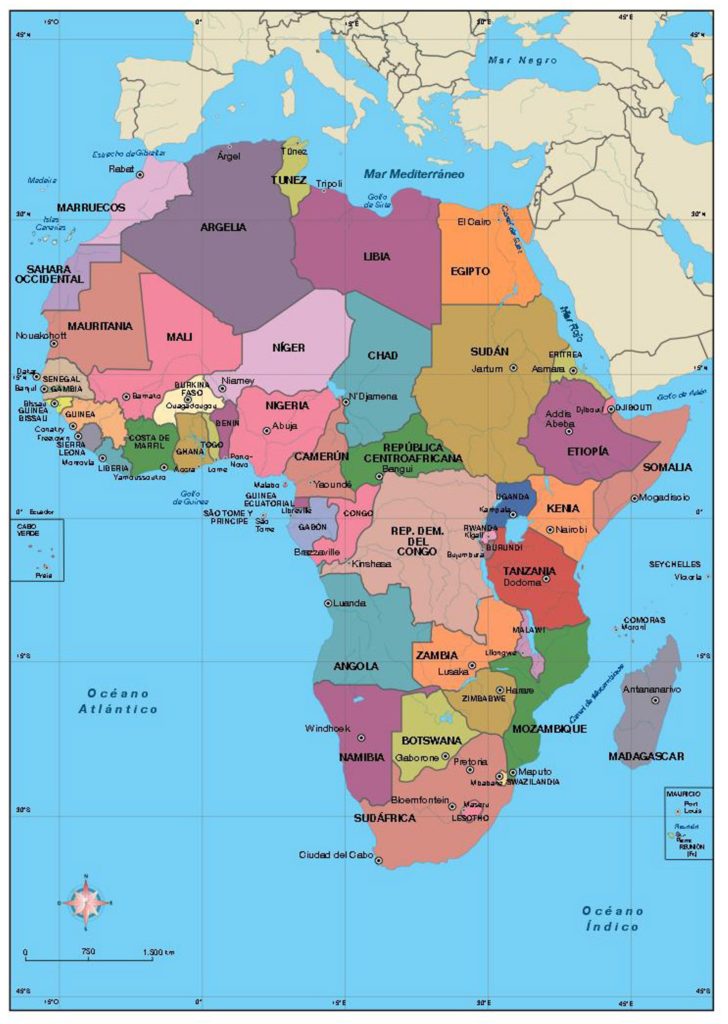General description of the African Continent
Africa is bordered by the Mediterranean Sea to the North, the Atlantic Ocean to the west and south west, the Arabian and Red Sea to the north east and the Indian Ocean to the east and south east where its waters meet the Atlantic Ocean waters.
With about 30.2 million km² Africa has more than 20 percent of the total land area available on our planet, and is the world’s second largest continent after Asia.
Divided by the equator, 40 percent of its land mass is desert. The Sahara desert is the largest one in Africa and on our planet with 9.4 million km² (for a comparison India surface is of 3.2 million km² and USA surface is of 9.8 million km²), until about 10,000 years ago a great part of it was still luxuriant and inhabited by humans as well as large animals like lions, hyppos, rhinos etc. The Sahara Desert is stretching from the Mediterranean Sea coast, across North Africa through a dozen countries. Immediately south of it the Sahel is a coast to coast buffer area with a width of abt 1,000 miles north to south, south of it we find savannah and wooden grasslands. Nowadays only less than 8 percent is covered with rainforest.
Majestic mountain ranges can be found in the north (the Atlas across Morocco, Algeria and Tunisia), in the center/east (Kylimanjaro, Ruwenzori etc) and in the south (Drakenberg range in South Africa).
The waters of the Nile river reaching the Mediterranean Sea on the coast of Egypt after having run for 6,853 km from its sources in Lake Tana in Ethiopia for the Blue Nile and in Lake No in South Sudan for the White Nile, making it the longest river in the world.
With its 69,485 km² the Lake Victoria Nyanza (bordering Uganda, Kenya and Tanzania) is the second largest lake in the world after Lake Superior between Canada and USA with its surface of 82,414 km² (The Caspian Sea with its 3.6 million km² is often regarded as the world’s largest lake, but it contains an oceanic basin, contiguous with the world ocean until 11 million years ago, rather than being entirely over a continental crust).
Africa has 54 sovereign states recognized by UN but 55 are recognized by the Africa Union including also the Western Sahara (not recognized by Morocco and not a member of the UN), still some parts hint they should be 57 if counting Somalia and other minor territories….
Africa offers in any case quite a variety of different peoples, ethnic, religious and social groups with many different customs, beliefs and languages.
Its problem so far continues to be the insufficient internal stability maybe strictly related to the achievement of real independence from the overwhelming influence of the world’s big countries interested in exploiting Africa’s rich natural resources and huge potential of development, it’s always the same old colonial approach dressed with latest fashion outfit.

